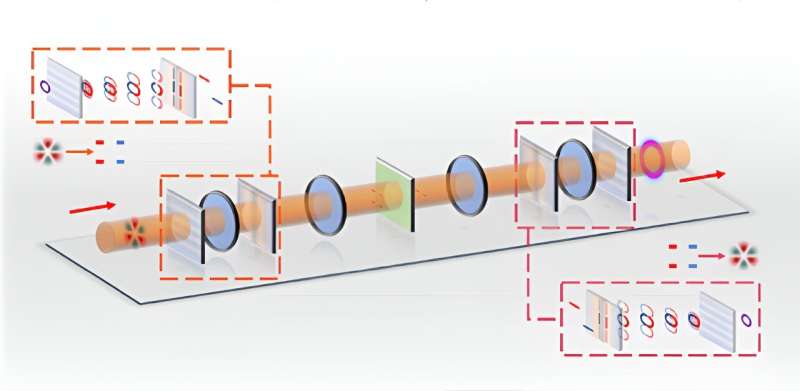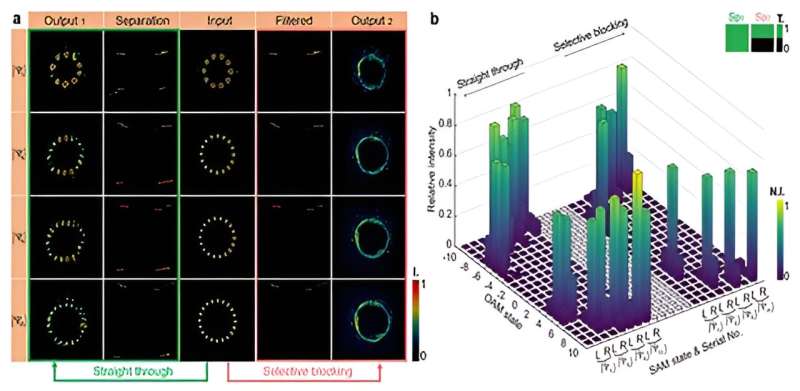This article has been reviewed according to Science X's editorial process and policies. Editors have highlighted the following attributes while ensuring the content's credibility:
fact-checked
peer-reviewed publication
trusted source
proofread
New technique accomplishes precise control of photonic angular momentum

Rotating objects carry angular momentum; this fact extends even to the tiniest of particles, such as photons. Photons possess not one but two distinct forms of angular momentum: spin angular momentum (SAM) and orbital angular momentum (OAM).
SAM dances between two eigenvalues, representing right and left circular polarizations, while OAM has infinite eigenvalues, corresponding to the spiral phase. When SAM unites with OAM, we witness the advent of "total angular momentum" (TAM), a photonic toolbox with vast applications spanning lidar, laser processing, optical communication, optical computing, quantum information, and more.
Just as OAM revolutionized the field, efficient recognition and real-time control of TAM modes offer keys for groundbreaking TAM applications. Yet existing methods for recognizing photon TAM states have limitations, including restricted dynamic range, low recognition accuracy, and an inability to adapt filtering on the fly. These constraints limit the progress of TAM development and application. Extraction of desired TAM modes from a photon beam has remained an unsolved puzzle until now.
As reported in Advanced Photonics, researchers from Beijing Institute of Technology have developed a photonic TAM manipulator that eliminates barriers, accomplishing on-demand manipulation of both SAM and OAM. Their approach involves the symmetrical cascading of two analogous units: the TAM separator and TAM reverser. These units, composed of specialized optical elements known as unwrappers and correctors, are designed through a meticulous process.

Picture the photonic TAM manipulator as a conductor leading an orchestra of light. The TAM separator transforms the incoming beam into an ensemble of spatially arranged stripes, each representing a TAM mode. A spatial filter takes the stage, determines which TAM modes to keep and which to block.
Finally, the TAM reverser brings back the separated beams to the spatial domain, completing the symphony. This transformative process maps the incident beam from the spatial domain to the "position-TAM domain" for easy filtering before conversion to the spatial domain.
The researchers report experimental demonstration supporting the recognition of up to 42 individual TAM modes. The results illustrate good TAM state selection performance, which makes it particularly attractive for high-speed large-capacity data transmission and high-security photonic encryption systems. It also offers new perspectives on high-fidelity photonic computation and the processing of quantum radar signals.
More information: Lang Li et al, Photon total angular momentum manipulation, Advanced Photonics (2023). DOI: 10.1117/1.AP.5.5.056002
Journal information: Advanced Photonics
Provided by SPIE



















